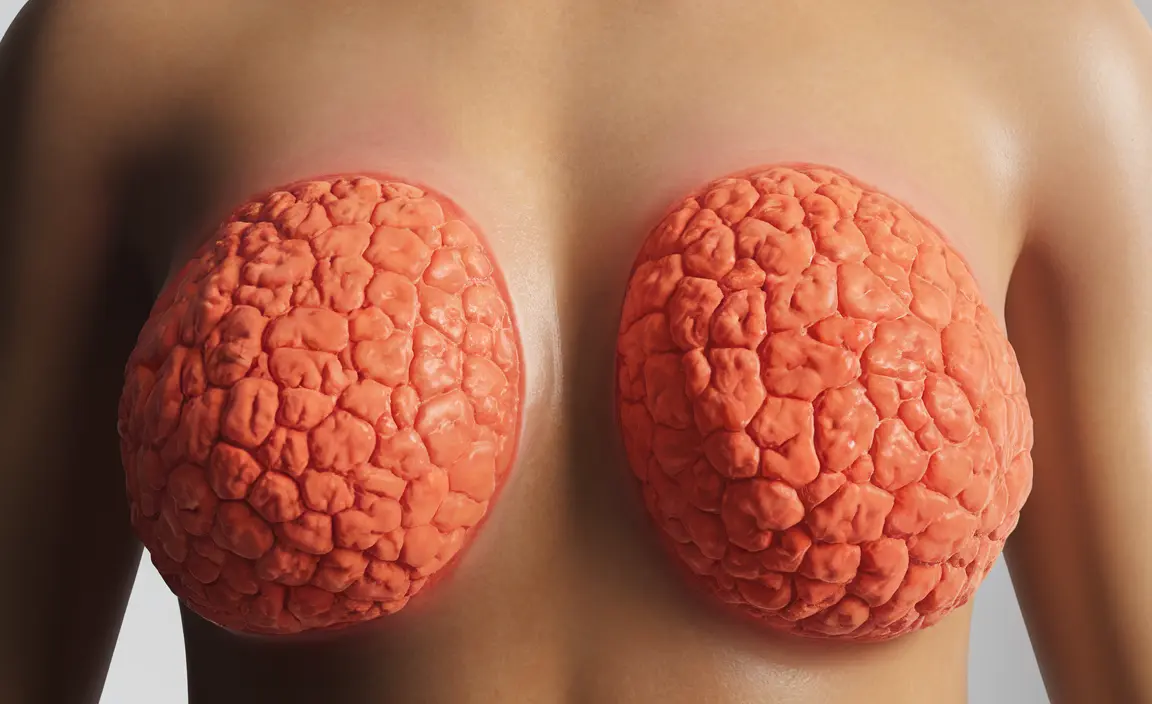Being able to distinguish between normal breast changes and potential signs of breast cancer is crucial for early detection and peace of mind. While most breast skin changes are benign, knowing what to look for and when to seek medical attention can make a significant difference in health outcomes.
This comprehensive guide will help you understand the visual differences between common breast skin conditions and potential warning signs of breast cancer, empowering you to make informed decisions about your breast health.
Common Breast Skin Changes vs. Cancer Signs
Understanding the visual differences between normal breast changes and potential cancer indicators is essential for proper breast health monitoring. Here's what you need to know about distinguishing between these conditions:
Normal Breast Pimples and Acne
Common breast pimples typically appear as:
- Small, raised bumps with a white or red center
- Isolated spots that may be tender to touch
- Lesions that resolve within a few days to weeks
- Bumps that follow a similar pattern to facial acne
Potential Cancer-Related Skin Changes
Concerning breast skin changes that warrant medical attention include:
- Persistent redness covering one-third or more of the breast
- Skin thickening or dimpling that doesn't resolve
- Unusual warmth or swelling
- Changes that affect a large area rather than isolated spots
Understanding Inflammatory Breast Cancer Signs
Inflammatory breast cancer (IBC) has distinct visual characteristics that differ from common skin conditions:
The "Orange Peel" Appearance
One of the most distinctive signs of IBC is skin that resembles an orange peel (peau d'orange). This appearance results from:
- Lymph fluid buildup causing skin dimpling
- Uniform skin thickening across the affected area
- Pronounced pores and texture changes
- Persistent appearance that doesn't improve with time
Critical Nipple Changes
Nipple alterations can be particularly significant indicators of breast health issues:
Normal Nipple Changes
Common, benign nipple conditions include:
- Temporary sensitivity or tenderness
- Minor dry skin or occasional flaking
- Changes during pregnancy or menstruation
Concerning Nipple Changes
Signs that require medical evaluation:
- New nipple inversion or retraction
- Persistent scaling or crusting
- Unexplained discharge, especially if bloody
- Continuous itching or burning sensation
When to Seek Medical Attention
Schedule an appointment with your healthcare provider if you notice:
- Skin changes lasting more than two weeks
- Progressive breast swelling or redness
- Any unusual breast changes that concern you
- Nipple alterations that persist or worsen
Frequently Asked Questions
What are the key differences between a breast cancer-related rash and a common pimple on the breast?
A breast cancer-related rash typically appears as a diffuse area of redness, warmth, and skin changes, while common pimples are isolated, raised bumps that typically resolve within days to weeks.
How can I identify early skin signs of inflammatory breast cancer from pictures or visual changes?
Early IBC signs include persistent redness, swelling, warmth, and skin thickening affecting a large portion of the breast. The skin may develop a distinctive orange-peel texture, and these changes typically don't improve over time.
When should I be concerned about redness, swelling, or dimpling on my breast and see a doctor?
Seek medical attention if you notice breast changes that persist beyond two weeks, affect a large area of the breast, or are accompanied by other symptoms like pain or nipple changes.
What does the "orange peel" skin appearance mean in relation to breast cancer?
The orange peel appearance (peau d'orange) is a characteristic sign of inflammatory breast cancer where the skin becomes dimpled and thickened due to lymph fluid buildup in the breast tissue.
Can breast cancer cause nipple changes like peeling, scaling, or discharge, and how is this different from benign skin conditions?
Yes, breast cancer can cause persistent nipple changes including scaling, discharge (especially if bloody), and new nipple inversion. Unlike benign conditions, these changes typically don't resolve on their own and may worsen over time.




